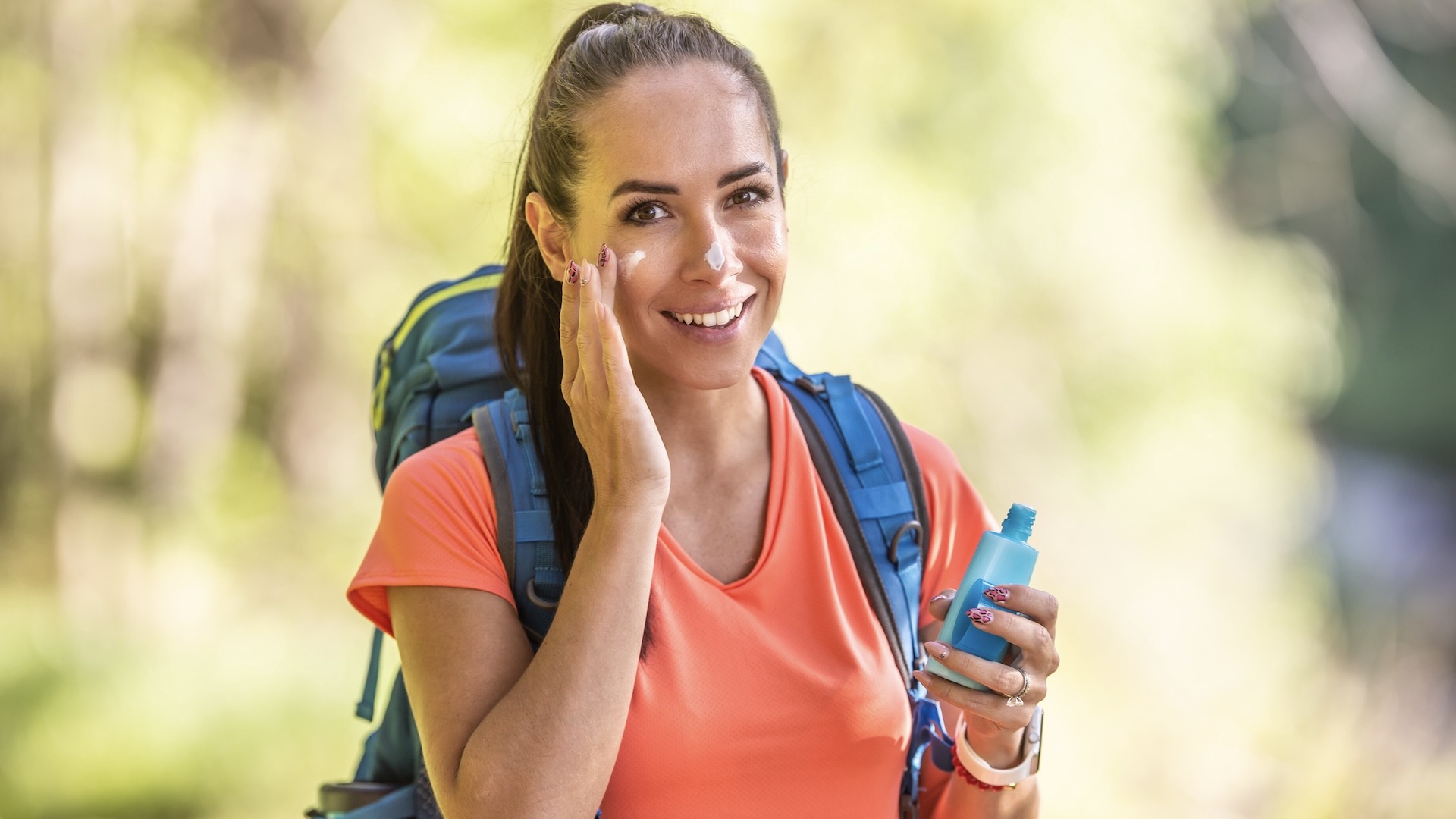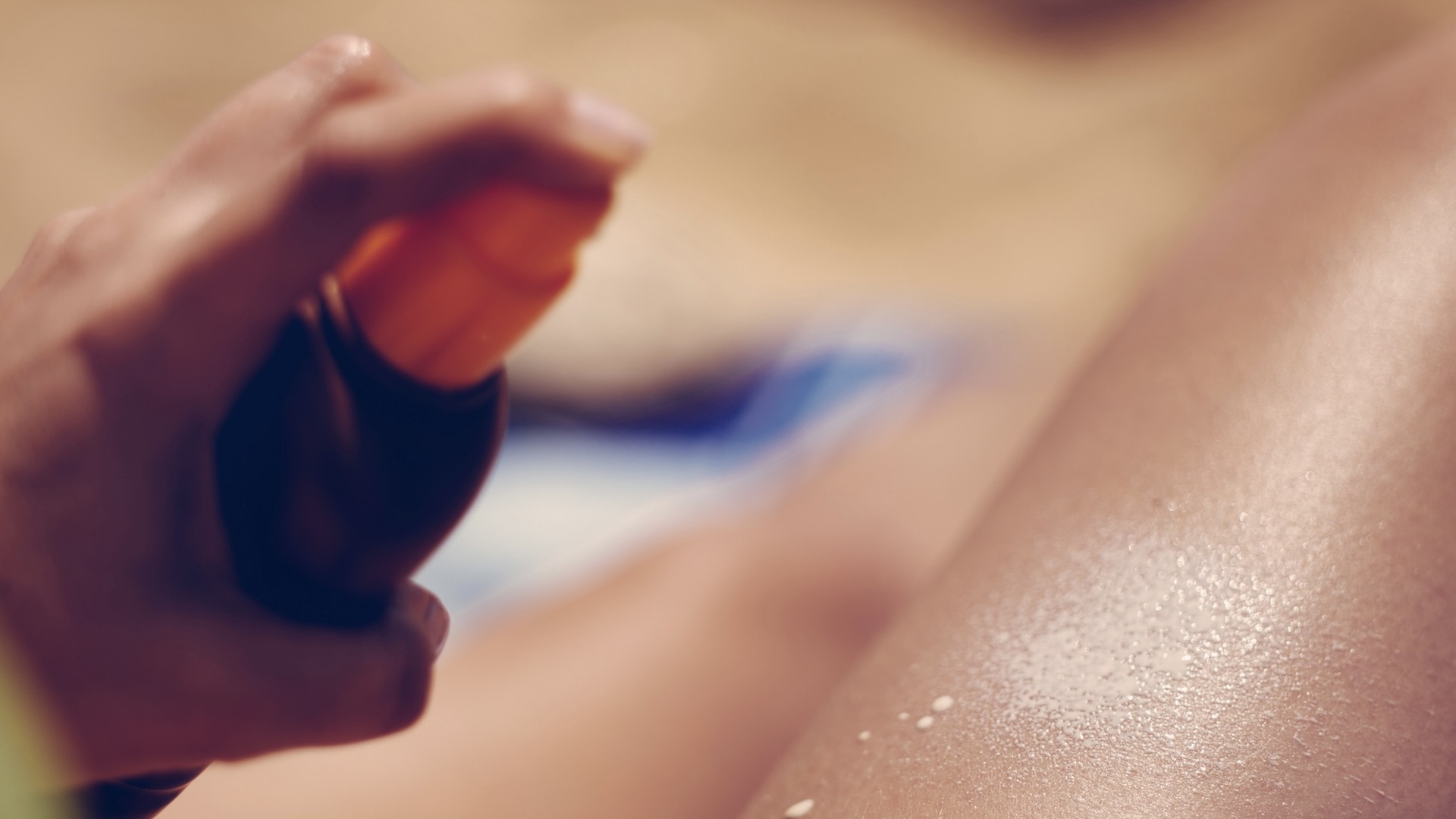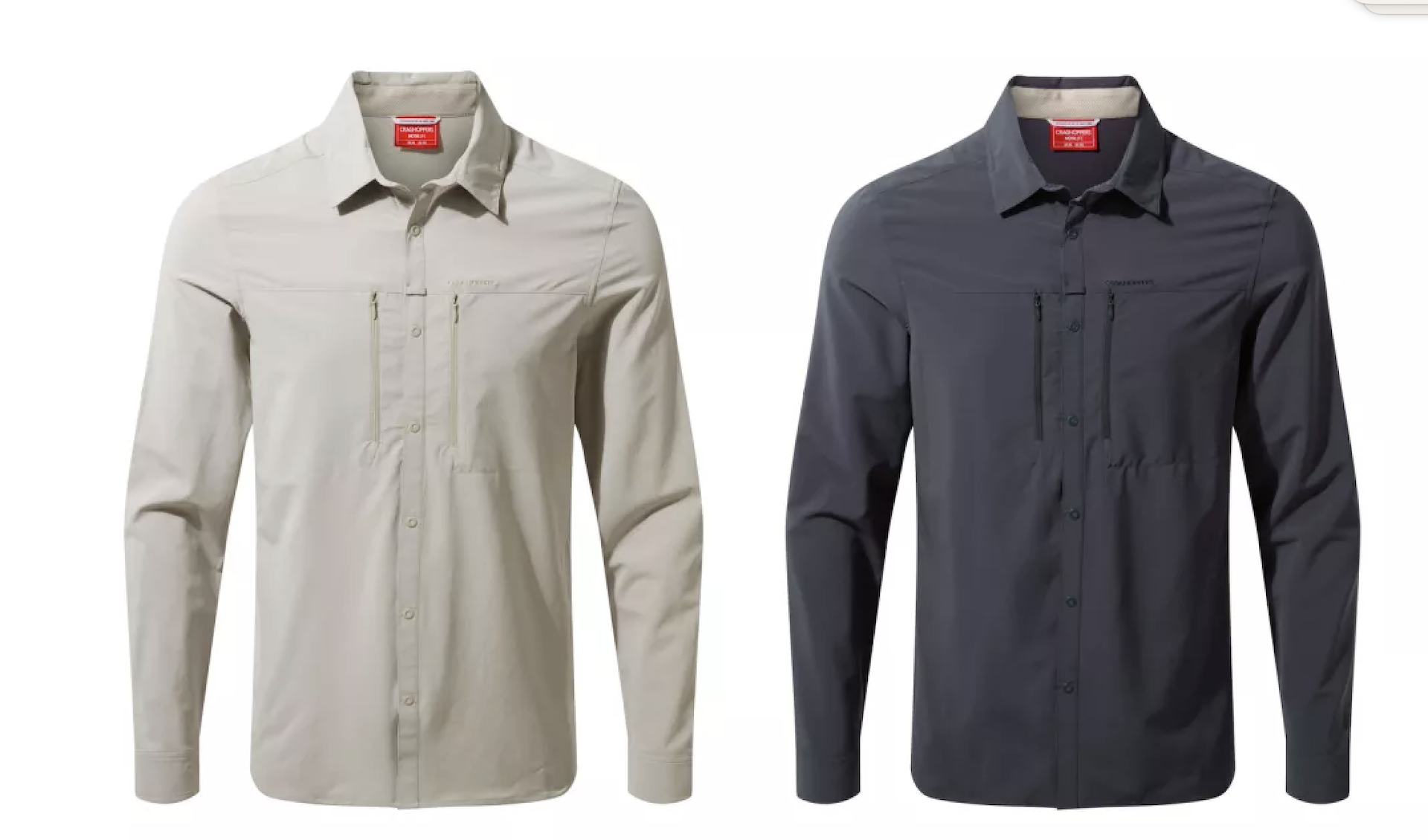
Spending time outdoors, whether trail running, hiking, backpacking, bikepacking or camping, means you will be exposed to the sun. While there are health benefits to being in sunshine, it’s important that you also protect your skin from the the dangers of too much UV radiation.
But what's the best way to do that? Many of us reach for the sunscreen automatically, but does UV-protective clothing do a better job keeping us safe?

Why we need sun protection
UV radiation is part of the natural energy produced by the sun, but according to the charity, the Skin Cancer Foundation, there are two types of UV light are proven to contribute to the risk for skin cancer.
Ultraviolet A (UVA) has a longer wavelength and is associated with skin aging, while ultraviolet B (UVB) has a shorter wavelength and is associated with skin burning.
UVA and UVB rays differ in how they affect the skin, but they both do harm. Unprotected exposure to UVA and UVB damages the DNA in skin cells, producing genetic defects, or mutations, that can lead to skin cancer and premature aging. UV rays can also cause eye damage, including cataracts and eyelid cancers.
Using sunscreen for UV protection
Sunscreen comes in a huge array of different formulations, including creams, sticks and sprays, with different SPF (sun protection factor) ratings. SPF is a measure of how much a sunscreen will protect you from UVB rays (the type that cause sunburn). The lower the SPF, the less protection the sunscreen offers.
Some sunscreens are SPF-only; you need a broad spectrum sunscreen to protect you from UVA rays (the type that cause tanning and skin aging).
The fairer your skin, the more likely you are to burn in the sunshine and the faster this will happen, but whatever your skin type, there will be damage if you spend a prolonged time exposed to the sun, and this is true even if you have a tan. A good sunscreen can provide protection, but only if applied properly.
Dr Paul Banwell, who runs The Banwell Clinic, and is the former head and founder of The Melanoma and Skin Cancer Unit (MASCU), one of the largest skin cancer units in the UK, says: “Most people apply sunscreen too thinly and that means protection is reduced. An adult should be applying around six to eight teaspoons to cover their body.
“To help to visualize this, some people use the two finger method. This works by squirting two fingers with sunscreen and applying two fingers to 11 different sections of the body, which include your head, face and neck, then left arm, right arm, upper back, lower back, chest, stomach, left upper leg, right upper leg, left lower leg and foot, right lower leg and foot. If you are using a spray, you want to apply until an even sheen appears all over the skin.
“Regardless of the SPF, it’s important to apply sunscreen 30 minutes before going outside and reapply it every two hours, or immediately after swimming or sweating. A high SPF should not lead to a false sense of security - it will not protect you from burning. A higher SPF does not mean you need to re-apply it less frequently. Sunscreens with high SPF ratings block slightly more UVB rays, but none offers 100% protection.”
The NHS recommends an SPF of a least 30. Dr Banwell says: “I also recommend a minimum factor of SPF 30 to protect yourself, although personally, I would use SPF 50. I also recommend using shade, protective clothing and a hat and staying out of the midday sun.
“The label should have the letters UVA in a circle to show it meets the standard, and make sure the sunscreen is not past its expiry date.”
Dr Banwell offers another note of caution. He says: “Ideally, people should use organic sunscreen, although I do appreciate it is more expensive and I would rather people were wearing any sunscreen than none at all.
“Natural sunscreens are less likely to aggravate eczema and other skin conditions and are generally very skin-friendly. They are also better for the environment, as they are made from minerals and without toxins, they biodegrade in the water so are safe for marine life.
“I would avoid sunscreen containing oxybenzone, octinoxate, avobenzone and retinyl palmitate for a range of reasons.”
In addition, Dr Banwell highlights the importance of selecting a broad spectrum sunscreen, which will protect against UVB and UVA rays. He says: "UVB rays cause redness and sunburn as well as skin cancer while UVA rays can also cause cancer as well as ageing of the skin. Newer sunscreens have infrared (IR) protection too and should be considered.”

Wearing UV protective clothing
There is a growing range of UV protective clothing, such as hiking shirts.
Dr Banwell says: “Sun-protective clothing is an easy way to stay safe because, unlike sunscreen, you don’t need to reapply.
Any clothing you wear can be considered sun-protective, but those with a UPF rating provide more protection and the factor of protection is based on its fibre density and structure. With UPF clothing, the weave is different and made from a special fabric to act as a barrier to the sun’s rays.
"UV light can penetrate through the tiny holes in the weaves of ordinary clothes and travel directly through some light-coloured clothes. However, UPF clothing means the block is much greater as it has a higher thread count."
A study published in the journal Cancers found that UV protection clothing offers more protection than sunscreen. The report concludes that “UV protection clothing should be considered the cornerstone of UV protection.”
When buying UV protective clothing, look for an item’s UPF rating to see its true UV protection level. Dr Banwell says: “The UPF rating is similar to SPF for sunscreen products. SPF is only for a sunscreen's effectiveness against UVB rays, considered to be the more damaging type of light. UPF, shows a fabric's effectiveness at filtering both UVA and UVB light.
“Look for items with extra coverage, such as a large collar or cuffs that go over the back of the hands. You also want a looser cut as an item that is stretched can become less effective at blocking the UV light. You’ll also want quick-drying fabrics as when they get wet, it can reduce the UPF rating.”
But beware that just like any other fabric, UV clothing will break down with frequent washing and use.
Dr Banwell says: “You can expect the clothing to last two to three years. Also read the label as it will often say how many washes the UPF rating will last for.”
Pros and cons of sunscreen
Sunscreen is widely available and relatively cheap compared to many items of UV protective clothing. It's easy to apply, and if you buy the right lotion for your skin type it should not cause irritation.
However, it can be easy to forget to reapply the sunscreen, so this may well be a negative for some people and if you are out and about in the countryside and hills, you also need to remember to take a tube or bottle of lotion with you.
Another negative is even application all over your body and especially in difficult to reach places such as the back and shoulders. For full coverage, you might need a friend to help you to apply sunscreen.
Some people find sunscreen to be greasy, although you can buy sprays that absorb more easily into the skin. Others do not like the smell of sunscreen.
Overall, sunscreen is a convenient way to protect your skin from harmful UV rays and readily available worldwide.
Pros and cons of UV protective clothing
While UV protective clothing costs more at the outset, it can be long-lasting and offer peace of mind for protection. There is no need to think about re-application of sunscreen. So long as you wear the garment, you will be provided with a steady protection.
The cost of UV protective clothing will be a factor for many people though, and unless you plan to wear the same item day after day, you'll need several garments. You might also need different garment s for different activities.
You still need to apply sunscreen to the skin, such as the arms, not covered by the UV protective clothing.
The UV protection of the clothing is diminished in the wet – if it rains, for example – and after many washing cycles.
- The best hiking hats: keep the sun and rain out of your face







